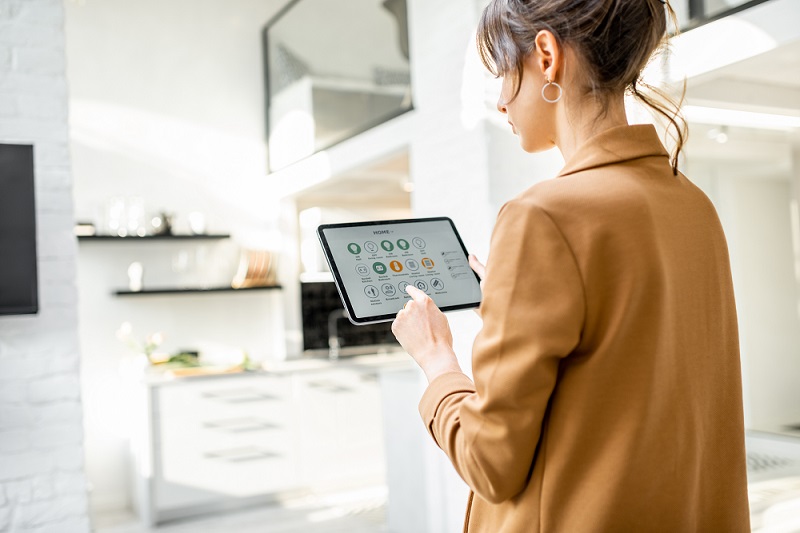
Powering a Sustainable Future: How Electricity 4.0 is Leading Saudi’s Low-Carbon Economy Transition
Climate change has become one of the most pressing issues facing our planet today. According to the Intergovernmental Panel on Climate Change (IPCC), if greenhouse gas emissions continue to rise at the current rate, the Earth's surface temperature is expected to reach 1.5°C above pre-industrial levels by 2030.
The increasing concentration of greenhouse gases in the atmosphere, largely caused by human activity, has led to a rise in global temperatures, more frequent extreme weather events, and rising sea levels. To limit global warming, experts have concluded that greenhouse gas emissions must peak by 2025 and be reduced by 43% by 2030, reports IPCC.
As we move towards a cleaner and more sustainable future, there is an urgent need to transform the way we produce and consume electricity. This is where Electricity 4.0 comes in – a new era of energy that promises to revolutionize our relationship with electricity.
.jpg)
Combining Electrification and Digitization to Boost Sustainability Efforts
Schneider Electric's global sustainability research reveals a promising finding: the adoption of digital technology in the global economy will lead to a gradual reduction in CO2 emissions. With the current policies and consumption patterns in place, there is a possibility of achieving a 30% reduction in global emissions by 2050. However, to reach a net-zero carbon world, we need to integrate digitization and electrification and disrupt the energy design in buildings, industries, data centres, transportation and across all critical infrastructure.
“Integrating a more electric and digital world is crucial to address the global climate crisis and achieving a sustainable and resilient future,” says Mohamed Nagy, Home & distribution Vice President of Schneider Electric, Saudi Arabia and Yemen.
He believes the electricity system is being replaced by a new paradigm driven by technological advancements, the energy crisis and the transition to renewables.
This transformation is of unprecedented scale, scope, and complexity, and it involves the convergence of the digital and electric worlds. Electricity 4.0 can digitalize the energy ecosystem from end to end, enabling us to scale renewables and reduce the current 68% energy loss or waste due to inefficiencies.
Making Homes More Sustainable and Efficient with Electricity 4.0
Homes are the largest consumers of electricity and the main contributors to carbon dioxide emissions. According to the Saudi Energy Efficiency Center (SEEC), the building sector in Saudi Arabia accounts for approximately 70% of the country's electricity consumption and 40% of its carbon emissions, indicating the significant potential for energy efficiency measures in the construction and operation of buildings.
One way to achieve sustainability in homes is through the use of renewable energy sources. Solar panels, wind turbines, and geothermal systems can be used to generate electricity, reducing reliance on fossil fuels and lowering energy bills. By generating electricity from renewable sources, homeowners can reduce their carbon footprint and contribute to a more sustainable future.
The Middle East, with its abundant sunshine and favorable weather, is actively promoting the use of renewable energy sources for sustainable homes. Countries like UAE, Saudi Arabia, and Jordan are leading the way in adopting solar and wind power technologies, with the UAE targeting 50% electricity from renewables by 2050. Saudi Arabia plans to install 58.7 GW of renewable energy capacity by 2030.
Another way to make homes more sustainable is through energy-efficient building design and materials. This includes insulation, efficient windows, and doors, and LED lighting. By improving the energy efficiency of homes, homeowners can reduce their energy consumption and lower their carbon footprint. According to one of Schneider Electric's partners, simply knowing real-time electricity consumption can lead to 7-10% energy savings. This also leads to cost savings in the long run, as energy bills are lowered.
Electricity 4.0 emphasizes energy efficiency and smart home solutions as key components in achieving sustainable homes. Smart devices like thermostats, lighting controls, and energy monitors provide homeowners with actionable insights into their energy usage, leading to significant energy savings and lower bills.
By using smart home solutions, homeowners can also create personalized living experiences that meet their unique needs. For example, with Schneider Electric’s Wiser Energy home power monitor, homeowners can visualize their energy usage in real-time and make informed decisions about energy consumption. This technology allows homeowners to customize lighting and temperature settings, automate window shades, and interact with voice-activated assistants to create a comfortable and bespoke living environment.
Integrating ESG into Business Operations
The success of Electricity 4.0 and the future of sustainability depends on the proper implementation of ESG investments in corporations and businesses. The ESG framework necessitates responsibility and measures to reduce pollution, CO2 emissions, and waste. Schneider Electric sets a positive example by incorporating sustainability and societal impact into all facets of its operations, creating long-term value for stakeholders, and delivering profitable growth. Since 2005, the quarterly Schneider Sustainability Impact (SSI) report has been used as a dashboard to track progress and improve the overall strategy. It also enables the company to anticipate and manage risks and opportunities by mobilizing critical stakeholders around specific and measured objectives.
Paving the Way for a Smarter and Sustainable Future
Looking towards a more sustainable future, it is predicted by International Energy Agency that the demand for electricity will increase up to three times its current level by 2050, driven by ongoing digital transformation.
With private sector leaders making significant headway towards a zero-carbon future, Electricity 4.0 is evidently leading their efforts. It is also benefitting homeowners, enabling them to adopt sustainable practices and save money.
By embracing the opportunities brought by electrical digitalization through Electricity 4.0, businesses and individuals alike can transform the way they work and live, reduce emissions, and contribute to a more sustainable future.



























